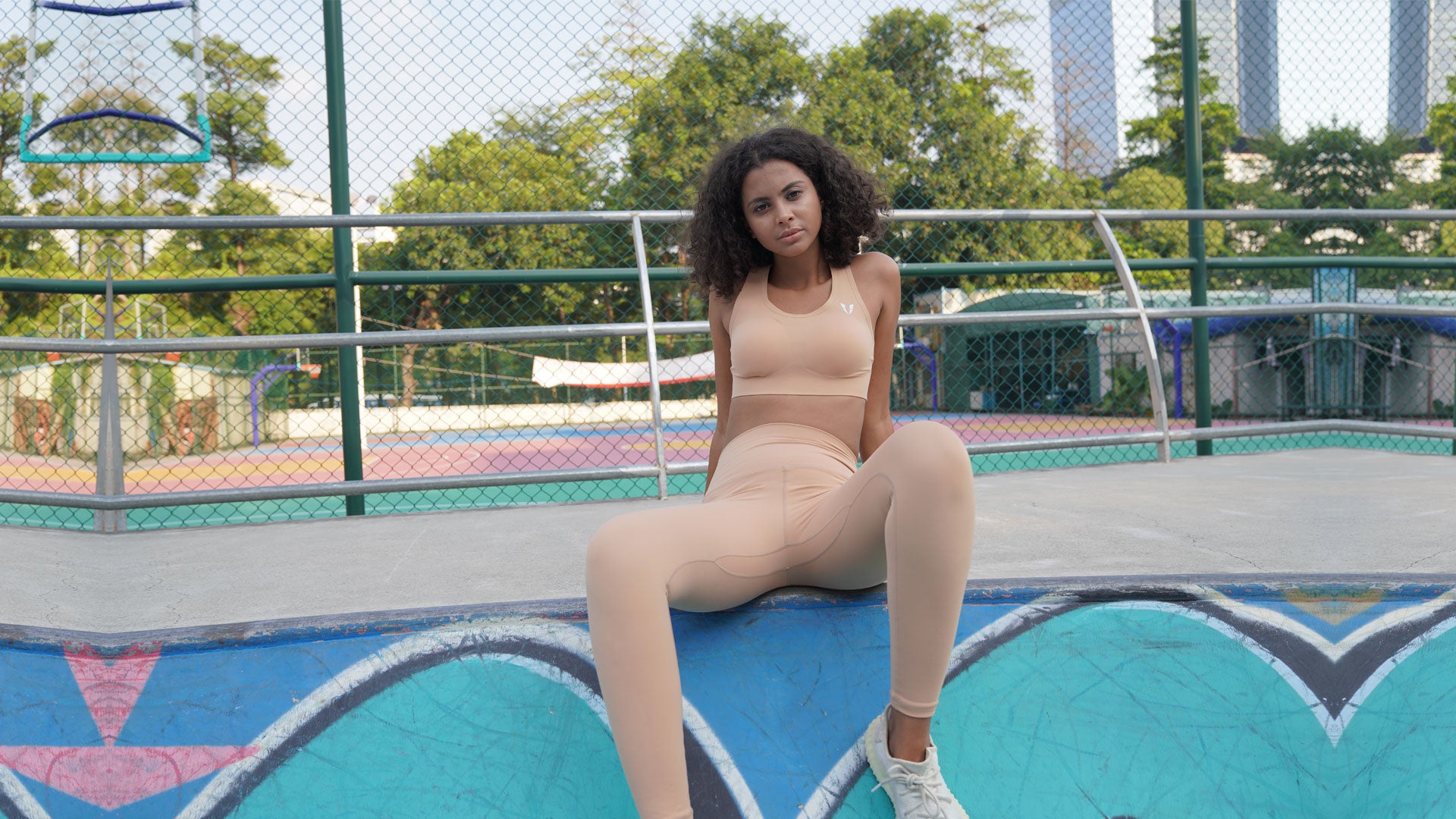
Difference between running tights and leggings
You may own several pairs of tights or leggings already, but which pieces of activewear are for running, and which are generic “leggings”? In truth, you can use them interchangeably, but it helps to know which pants were made for running, and which were made for yoga or casual wear. With that said, let’s get into it: what is the difference between running tights and leggings?
What are running tights?
Running tights come form-fit to the leg. They’re designed not to slide down, ride up the waist, or bunch up in places– thus, they provide ideal comfort during a run, allowing for a free range of motion without restriction or discomfort.
In addition, running tights are always made out of a dry-fit material, which helps to wick moisture away from the skin. This makes running tights comfortable to work out in, even on hot days. You’ll never see running tights made out of material such as cotton, which absorbs moisture rather than wicking it away.
You can wear running tights with or without shorts on top; this depends on your personal preference. Some running tights appear a little more translucent, and other pairs will look more opaque. Decide what you feel most comfortable in while you’re running, whether you’re outdoors or at the gym.
What are leggings?
Women frequently wear leggings, on the other hand, either as casual clothing or as yoga attire. Leggings can be made out of all kinds of materials, such as cotton, spandex, or polyester; for this reason, you may find leggings that look a bit like running pants. There are some key differences, however.
First, leggings aren’t designed to wear in ultra-sweaty or humid environments. If you wear yoga leggings during a steamy run, you might find yourself feeling uncomfortable. This is because leggings tend to be thicker, and as mentioned above, they aren’t designed for moisture wicking.
Some leggings are meant for yoga, and look quite similar to running leggings. You’ll find that yoga leggings, as opposed to running leggings, feel a bit more soft and stretchable– think about the fact that, if you’re practicing yoga in this attire, you’ll need to bend, stretch, and squat, without your leggings bunching up or tearing.

Differences Between Running Tights vs. Leggings
So, are running tights the same as leggings, and vice versa? While you can use some styles of leggings interchangeably, it’s wise to know the difference between the two. Here are some of the different benefits that running tights and leggings provide.
Running tights provide compression
The first thing you’ll notice about running tights is that they’re, well, tight. This is why you may see running tights advertised as “compression pants”; as we mentioned earlier, they fit tightly around the legs for a couple of different reasons.
First, this compression prevents the tights from sliding down your waist while you run. How annoying would it be to constantly have to hike your pants back up to a comfortable position for the duration of a three-mile run? Not so much fun!
Secondly, the tights’ “compression” action increases circulation in the legs during your workout. While you’re doing any cardiovascular exercise, it’s important to keep blood flowing back to the heart, and compression pants help to do exactly that– providing you with a quicker, smoother run.
Leggings are more stretchable
When you shop for yoga leggings, you’ll often see tags advertising “four-way stretch” material. What does this mean? Basically, a “four-way stretch” allows the leggings’ fabric to stretch in more ways than one: up and down, side to side, back and forth.
The purpose for this is that when you practice yoga, you’ll stretch like a pretzel in much more dynamic ways than the simple one-foot-in-front-of-the-other that you’d perform in a running workout. Thus, your leggings must be able to withstand that pressure. You don’t want any tears occurring during yoga class, and you also don’t want your attire to restrict your range of motion.
Running tights are made out of moisture-wicking material
When you run, you’re likely going to sweat at least a little bit, even if you use a treadmill in an air-conditioned room. You’ll feel a lot more comfortable during your workout if you wear moisture-wicking material such as nylon, polyester, or bamboo, as these fabrics draw moisture away from the body, providing for a cooler overall experience.
Leggings, on the other hand, are often made out of materials such as cotton. Cotton is breathable, does not wick moisture; while this is fine for a hatha yoga class, it may prove uncomfortable for an intense cardio workout.
Leggings will feel warmer
You’ll find that leggings, as opposed to running tights, generally feel thicker, warmer, and perhaps a tad bit heavier. Again, this has a little bit to do with the material composition: since running tights are meant to wick moisture, they will feel lighter on the body, whereas leggings will feel more snugly.
Running tights are more likely to be seamless
Finally, you’ll see the word “seamless” on lots of running tights these days. When you’re running a brisk mile around the track, you’ll want to be sure that your tights can withstand that rapid, repetitive motion– that’s where the “seamless” build comes into play. Again, you won’t see seamless composition on each and every pair of running tights, but it’s a common marker that can help you differentiate tights from leggings.
There you have it; now, you know how to visit an activewear store and know exactly which items are running tights, and which items are leggings! Whether you’re a runner, a yogi, or you simply like to wear leggings on your casual days, these points are sure to help you pick the pair that will suit your needs best.



Laisser un commentaire
Ce site est protégé par hCaptcha, et la Politique de confidentialité et les Conditions de service de hCaptcha s’appliquent.